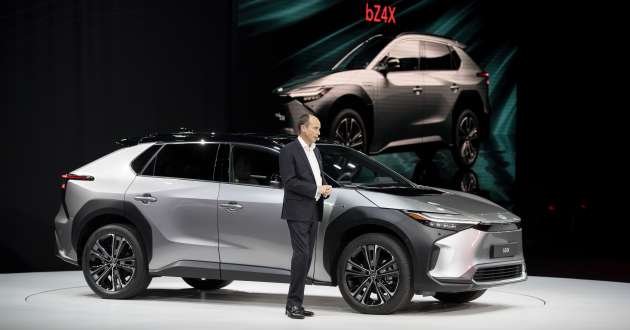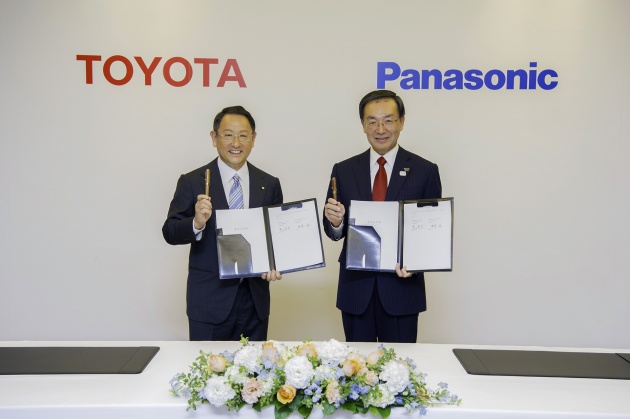Besides introducing the Corolla Cross, GR 86 and bZ4X, Toyota Motor Europe (TME) also shared its European business strategy at its recent Kenshiki (translates to insight from Japanese) event that took place in Brussels, Belgium.
During the main plenary briefing, the company discussed its strategy to achieve carbon neutrality as quickly as possible, whilst minimising carbon emissions during the journey to neutrality. To do so, it will accelerate its electrification efforts and offer a wide range of CO2-efficient powertrain solutions to all its customers in the region.
Instead of just electric vehicles (EVs), Toyota says it will roll out more practical and affordable zero emissions vehicles (ZEVs), with the bZ4X being one of them. By 2030, the company anticipates ZEVs to account for at least 50% of all sales in Western Europe, although this could be higher if customer demand increases.
“Moving beyond 2030, we expect to see further ZEV demand acceleration and Toyota will be ready to achieve 100% CO2 reduction in all new vehicles by 2035 in Western Europe, assuming that sufficient electric charging and hydrogen refueling infrastructures are in place by then, together with the renewable energy capacity increases that will be required,” said Matt Harrison, president and CEO of TME.
Meanwhile, Gill Pratt, chief scientist at Toyota Motor Corporation (TMC) and CEO of Toyota Research Institute (TRI), explained that a diverse range of powertrain solutions is the best way to reach carbon neutrality.
This is because Toyota’s markets are hugely diverse and can differ in terms of energy sources as well as the transportation needs of people. Additionally, the carmaker wants to maximise the carbon return on investment to ensure it optimises the use of scarce raw materials needed for batteries.
“Whilst Toyota is committed to making millions of battery electric vehicles available to customers, the way to reduce the most net carbon emissions globally is to use every item in our toolbox, including hybrid electric, plug-in hybrid electric, battery electric and fuel cell electric vehicles, with the proportions of each optimised to make best use of the infrastructure constraints and customer circumstances of every region, and the limited supply and improving performance of batteries,” said Pratt.
Toyota has already announced a substantial investment in battery technology a few months ago, and this has resulted in some breakthroughs. This includes the start of commercial production of the world’s first bi-polar nickel–metal hydride (NiMh) battery, which is used by the latest Prius c (known as the Aqua in Japan). Benefits over a regular NiMh battery include lower costs as less precious minerals are needed as well as double the output density.
The carmaker says that by applying similar techniques to lithium-ion (Li-ion) batteries, along with further improvements in vehicle energy consumption, it expects a 50% reduction in battery cost per vehicle with minimal range deterioration. These efforts will result in more affordable and accessible EVs, which is one of the company’s targets for the coming years.
Gerald Killmann, vice president of TME R&D, also confirmed that solid-state batteries will first make their way into Toyota’s hybrid electric vehicles, following prototype testing last year. This technology has been heralded as the next leap forward, as solid-state batteries are capable of delivering higher output, longer range and shorter charging times compared to current batteries.
The post Toyota ZEVs to make up 50% of Western Europe sales by 2030 – hybrids to receive solid-state batteries first appeared first on Paul Tan's Automotive News.




0 Comments